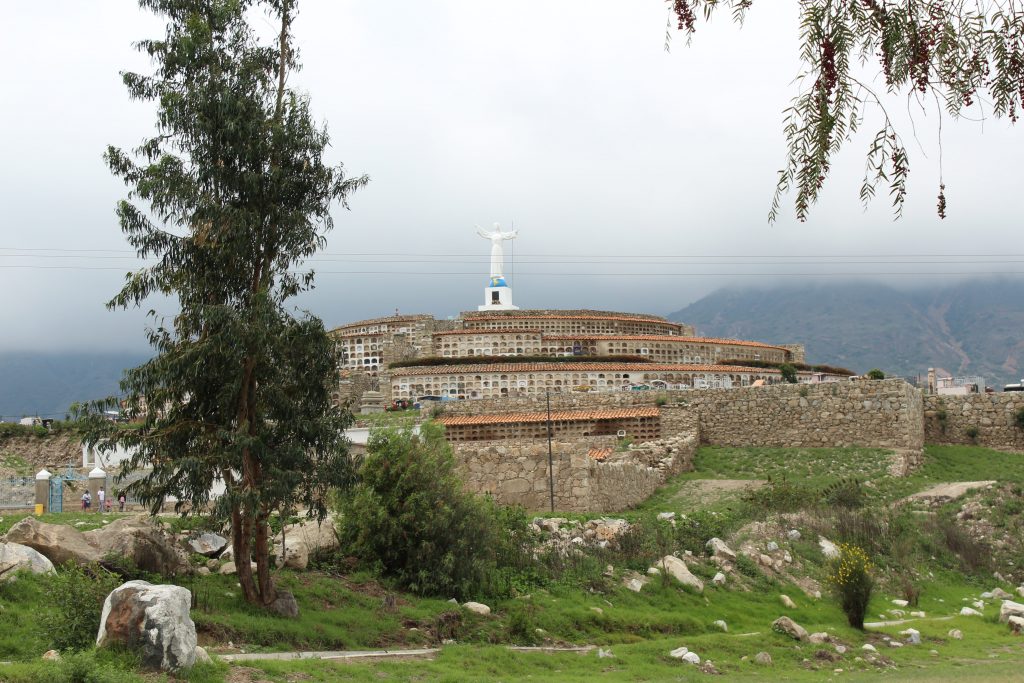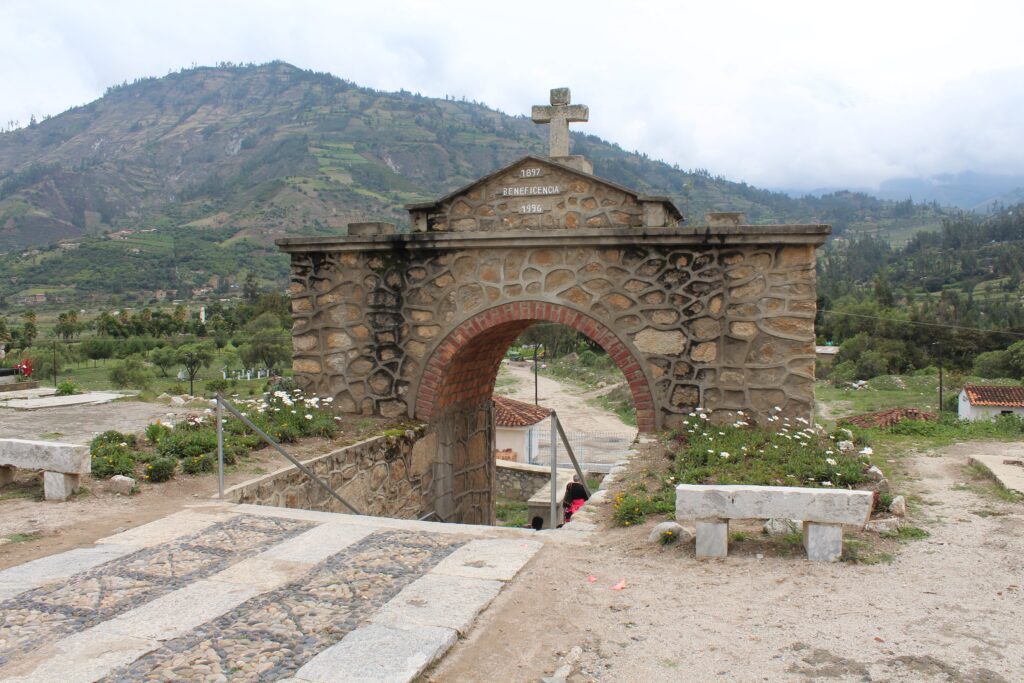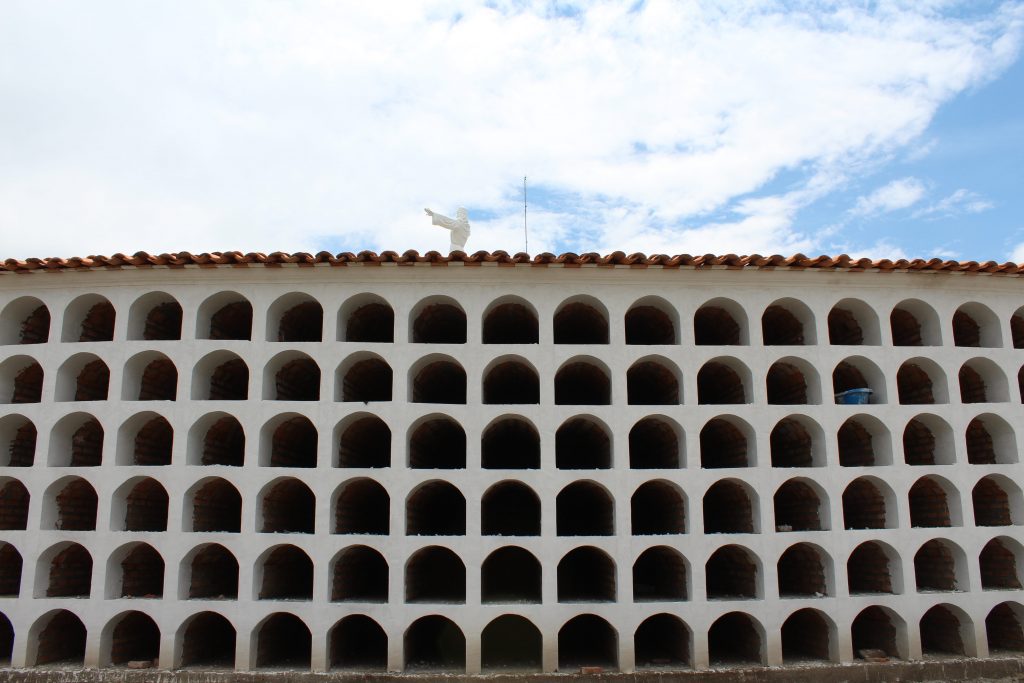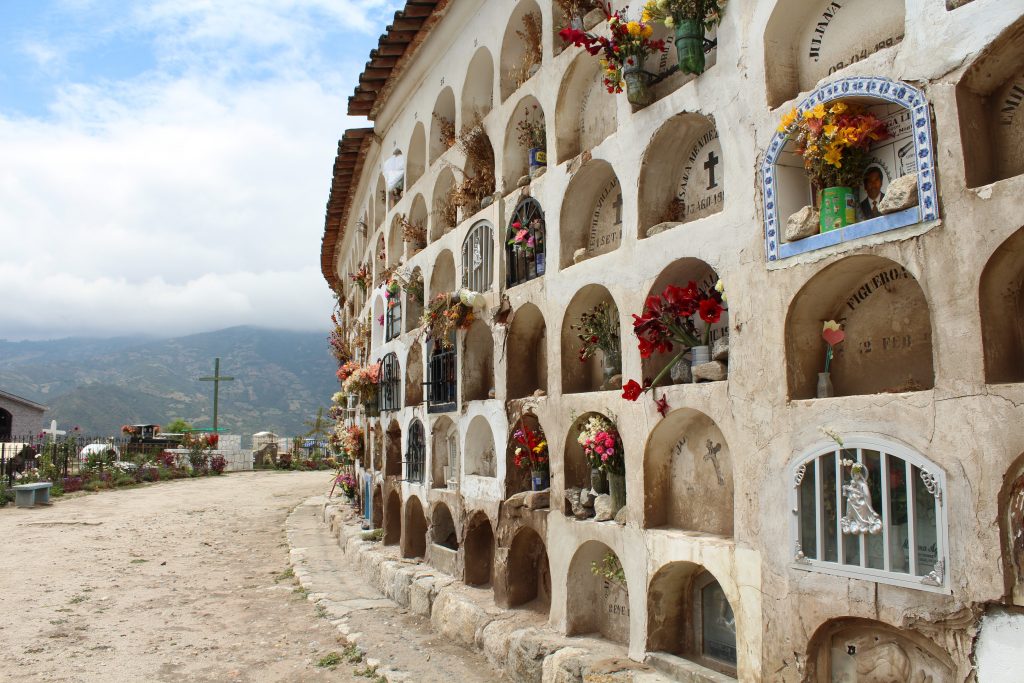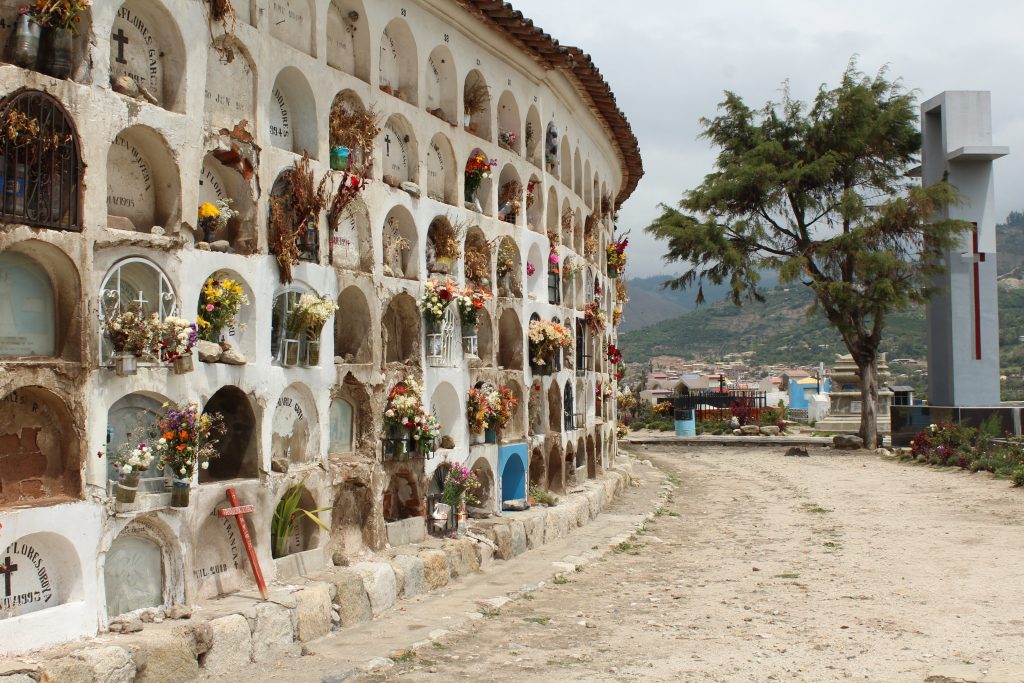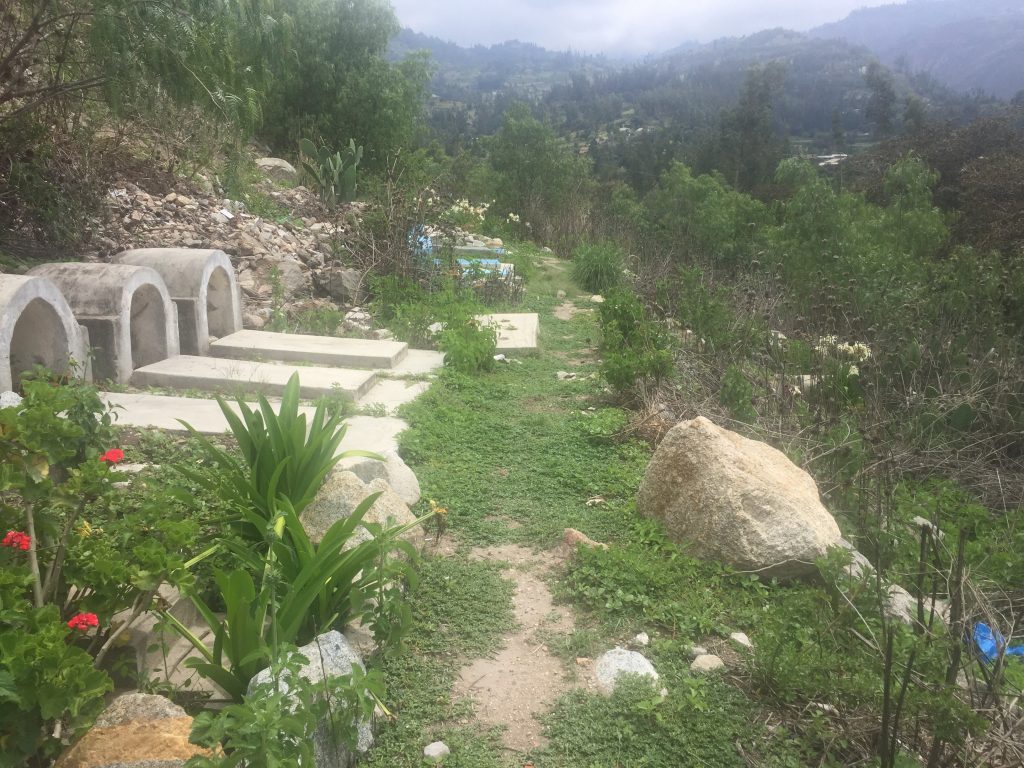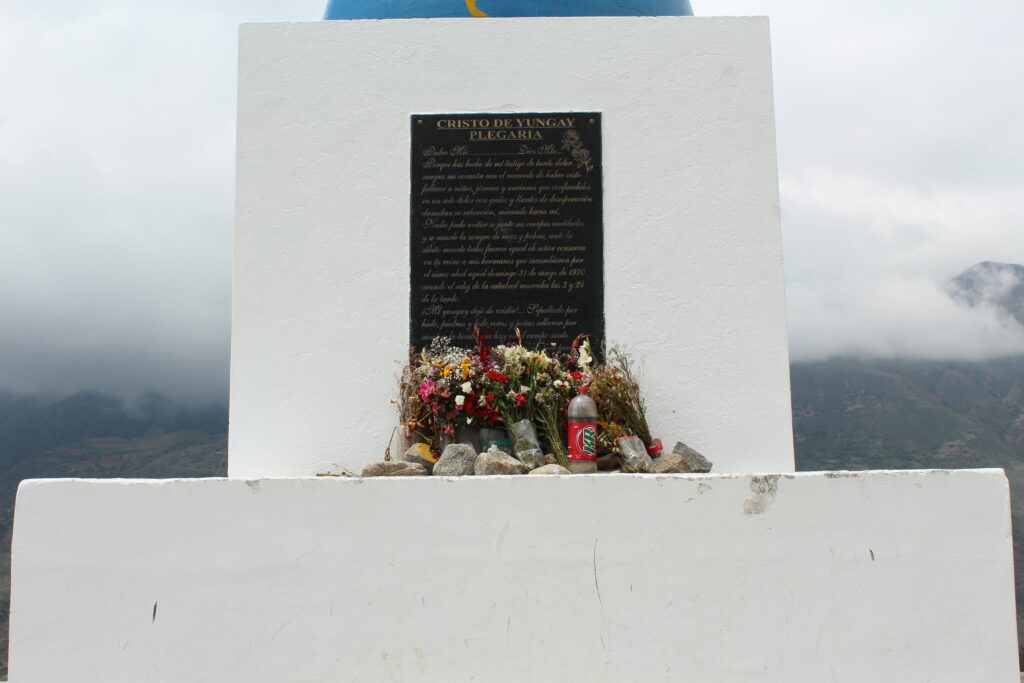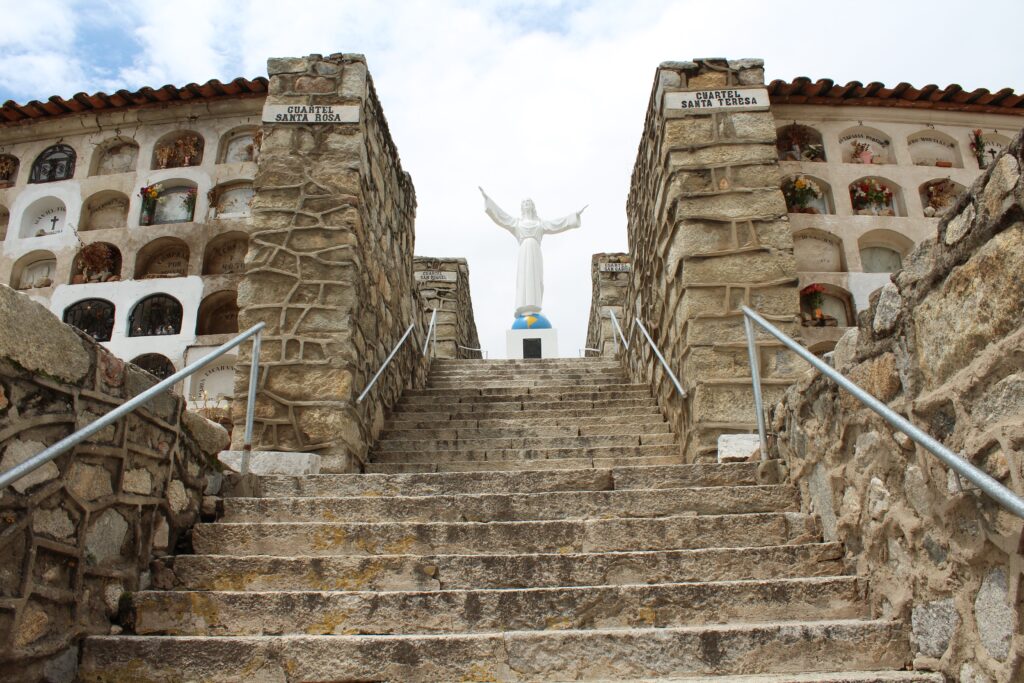The cemetery compacts many layers of history into its concentric spiral shape. It sits atop the ruins of a pre-Incan fortress that was built by the Yunga people. Its name was Wuansakay, meaning Fortress of the Virile Lord, or Fortress of He Who Owns the Corn. It is thought that the fortress was destroyed by a landslide in around 1500BC. The archeological site has been the subject of studies by Antonio Raimondi, Soriano Infante and Pedro Espinoza Pajuelo.
The cemetery as it stands in the twenty-first century was designed by Swiss architect Arnoldo Ruska in 1891, and built in 1897.
When the landslide struck on May 31st, 1970, dozens of people ran to safety by climbing to the heights of the graveyard. It was one of four pockets of stable ground known to the survivors as “islas”, or islands. It is estimated that around 100 people set up camp on the hilltop, where they awaited rescue for up to a week. Eventually, help was brought by the military, police and student volunteers.
The cemetery is still used as a burial site today. As such, it serves as a bridge between the old Yungay and the new Yungay, as well as a bridge between the living and the dead.
Each plot comes with a different price. The higher graves are more expensive, because their residents are closer to heaven. Those with lesser means are buried on the cemetery outskirts.
The cemetery is a highlight on the tourist trail. People clamber up the steps to see the views and to admire the Cristo de Yungay monument. The statue is symbolic of the town’s tragedy and, perhaps more importantly, its resurrection after the landslide.
